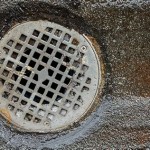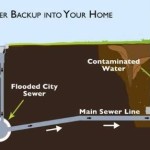How to Maintain a Basement Sump Pump
A sump pump is an essential component for homeowners with basements, especially those in areas prone to heavy rainfall or flooding. It acts as a safeguard, preventing water from accumulating in the basement and causing damage. However, like any mechanical device, sump pumps require regular maintenance to ensure they operate efficiently when needed. This article will guide you through essential steps to maintain your basement sump pump.
Regular Inspections and Cleaning
Regular inspections are crucial for identifying potential issues early on. Aim to inspect your sump pump at least once a month, especially during periods of heavy rainfall or snow melt. Here's what to look for:
- Check the surrounding area for water: Any sign of water pooling near the sump pump indicates a potential problem.
- Inspect the discharge pipe: Ensure the pipe is free of blockages and is leading to a proper drainage point away from the foundation.
- Test the pump: Manually activate the pump by using a bucket of water to pour into the sump pit. Observe the pump's operation and listen for any unusual noises.
- Clean the sump pit: Remove any debris, sediment, or leaves that may have accumulated at the bottom. This prevents clogs and ensures the pump can operate efficiently.
Additionally, it is recommended to have your sump pump professionally inspected and serviced at least once a year. This allows a qualified technician to thoroughly assess the pump's condition and perform any necessary repairs or adjustments.
Maintaining the Check Valve
The check valve is a vital component of the sump pump system that prevents water from flowing back into the basement after the pump has stopped. It is a one-way valve that opens to allow water to flow out through the discharge pipe but then seals to prevent backflow. Here's how to maintain the check valve:
- Check for leaks: If you notice water dripping from the check valve or near the discharge pipe, it indicates a leaky valve. Replacing the valve may be necessary.
- Test the valve: Manually pull on the discharge pipe to check for resistance. If there's none, it means the valve is open and not properly preventing backflow.
- Inspect the check valve for debris: Any blockages in the valve can hinder its proper operation. Clean or replace the valve as needed.
Properly functioning check valves ensure that the sump pump's efforts are not reversed by water flowing back into the basement.
Ensuring Power Supply and Battery Backup
A reliable power supply is essential for the sump pump's operation. During power outages, a battery backup system becomes critical. Here are some key considerations for ensuring your sump pump has continuous power:
- Test the power outlet: Ensure the outlet powering your sump pump is working correctly and has a dedicated circuit.
- Check battery backup: If your sump pump has a battery backup system, test the batteries regularly to ensure they are in good condition.
- Consider a generator: For areas with frequent power outages, a generator can provide a reliable power source for your sump pump.
A dependable power source safeguards your basement from water damage, even during unexpected power interruptions.
By following these maintenance steps, you can ensure your sump pump is ready to handle any unexpected weather events. Regular attention to your pump's well-being will help safeguard your basement and minimize the risk of water damage.

Complete Sump Pump Maintenance Checklist 7 Tips You Need To Know

Maintain Your Sump Pump Fema Gov

Keep Your Sump Pump Well Pumping

Sump Pump In Your Basement Best Tips For Homeowners

5 Essential Tips For Maintaining Your Sump Pump

How To Clean And Care For Your Sump Pump

Maintaining Your Sump Pump Mold Solutions Inspections

Steps For Maintaining Your Sump Pump Ashworth Drainage

Outdoor Indoor Sump Pump Tips Maintenance S A B Plumbing And Heating Inc

6 Things Sump Pump Owners Need To Know Youtube
Related Posts







